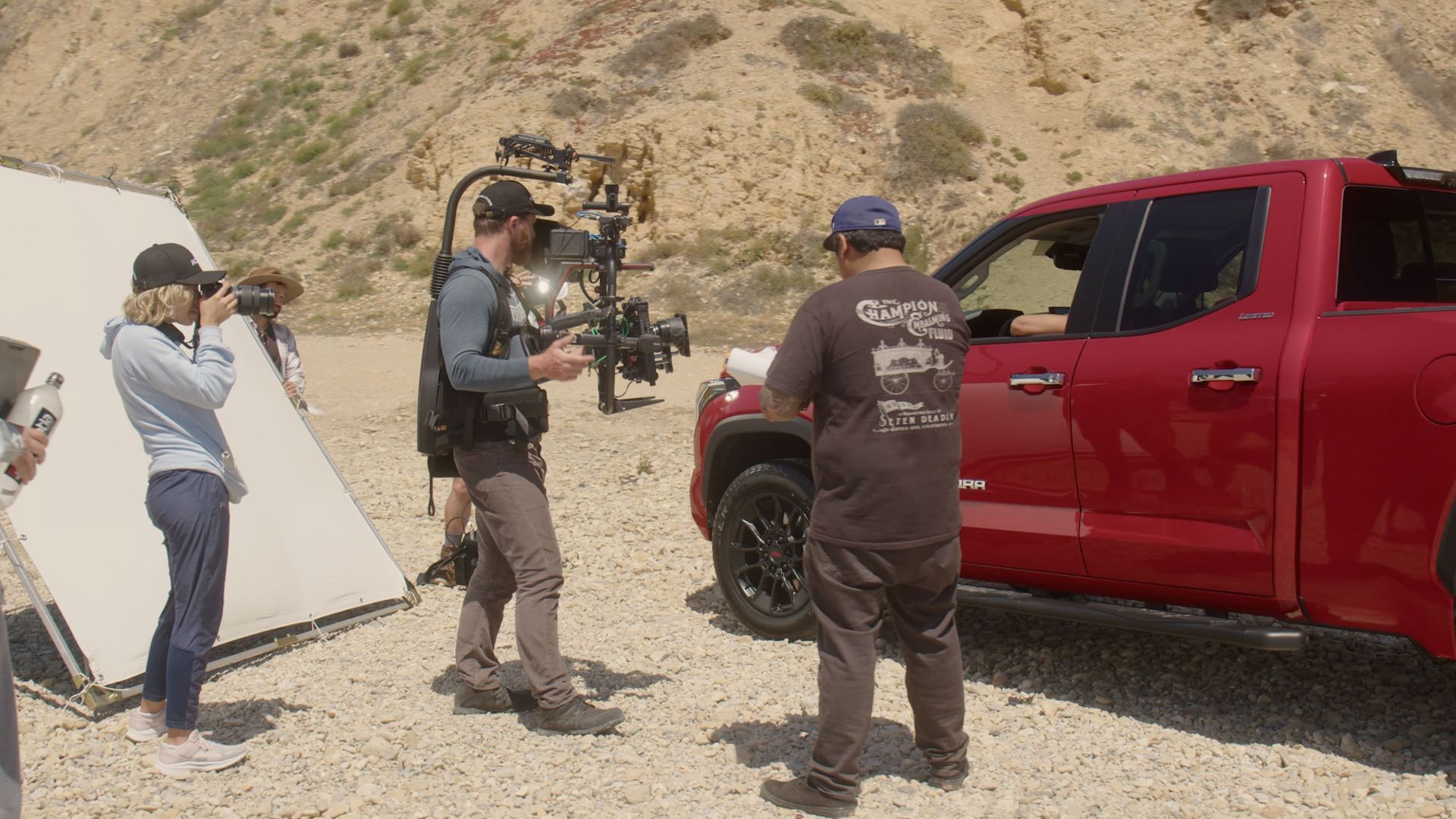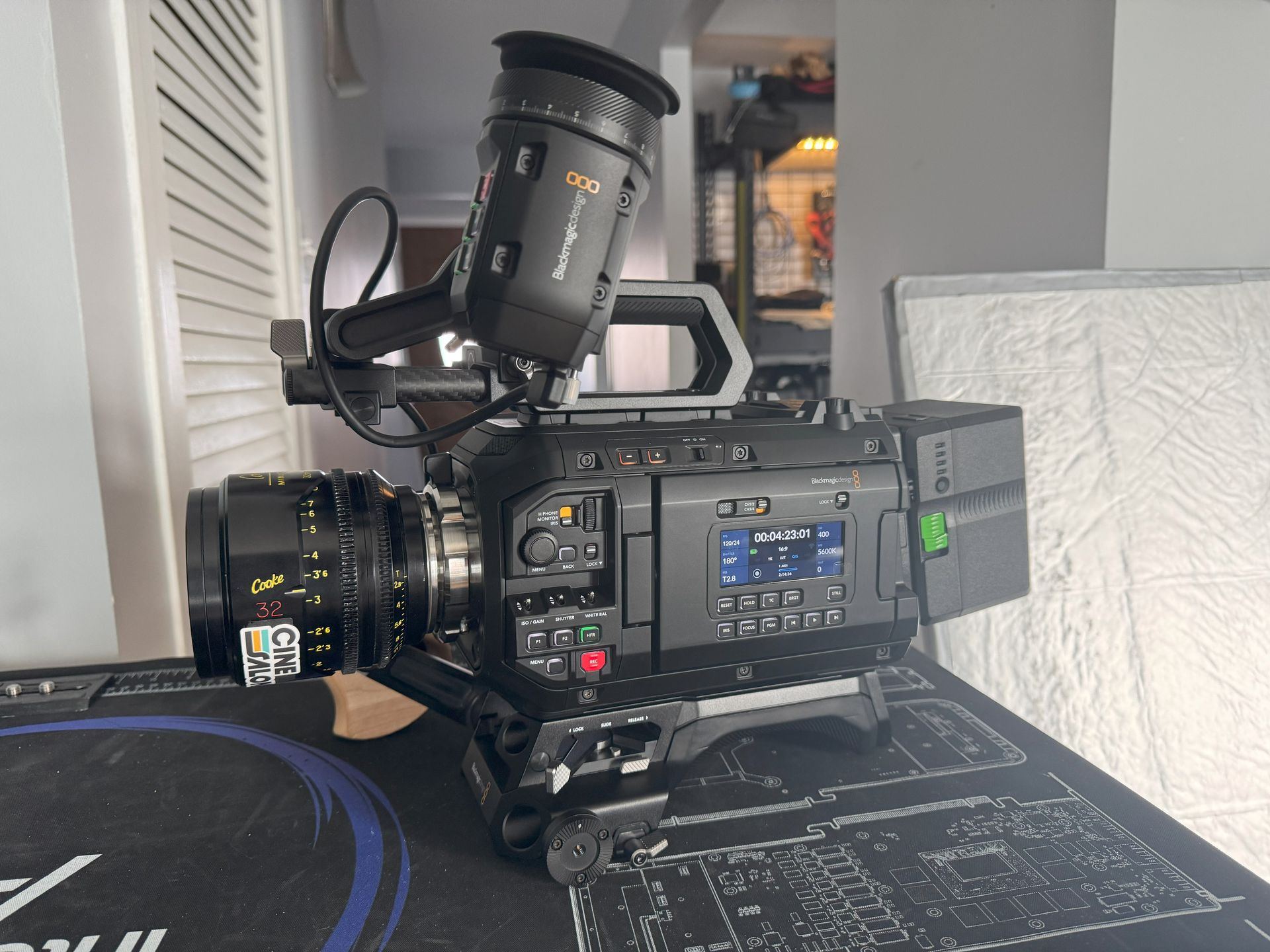Video marketing has undoubtedly proven to be a game-changer in digital advertising, offering the highest return on investment (ROI) compared to any other media format. Its effectiveness in engaging audiences and conveying messages is unparalleled.
However, despite its undeniable potential, video marketers still need help crafting successful strategies.
In this report, we will delve into the insights shared by video marketers themselves, shedding light on the top five challenges they face in their endeavours.
We have meticulously compiled this valuable information to help you understand the hurdles that may come your way and, more importantly, how to overcome them seamlessly in your marketing strategy.
So, without further ado, let's dive into the survey results and discover what marketers are grappling with and the strategies to conquer these obstacles.

Top 7 Challenges Video Marketers Are Faced With
1. Barriers encountered during the production
During the video production process, marketers may encounter various challenges that can impede their progress and hinder compelling content creation. To overcome these barriers, one must equip oneself with valuable insights and adopt effective strategies that lead to seamless production.
Insufficient Equipment and Resources
One of the primary barriers video marketers face is the lack of adequate equipment and resources to bring their creative vision to life. Our survey revealed that 62% of marketers who invested in their video equipment described the creation process as "easy."
However, not all marketers have the means or knowledge to make such investments. As a result, they need help producing high-quality videos that resonate with their audience.
To address this challenge, marketers can explore cost-effective alternatives or collaborate with production teams with the necessary equipment. Additionally, leveraging user-friendly and accessible video editing software, like Adobe Premiere Pro, can significantly streamline the production process, even for those with limited resources.
Limited Technical Expertise
Even with the right tools, video production can still present obstacles for marketers needing more technical expertise. The intricacies of video editing, lighting, and sound engineering may seem daunting, leaving marketers needing guidance about achieving professional results.
To overcome this barrier, marketers should invest time in self-education or enroll in workshops that cover essential production techniques. They can also seek guidance from experienced video creators or hire professionals to assist with specific aspects of the production process.
Time Constraints and Tight Schedules
In today's fast-paced marketing landscape, time constraints can pose significant challenges to video production. Marketers often juggle multiple projects and deadlines, leaving little room for meticulous planning and execution.
To address this issue, marketers should prioritize the video production process and allocate sufficient time for each stage, from scriptwriting to post-production. By adhering to a well-structured timeline, they can avoid last-minute rushes and ensure the final product meets the desired quality.
Creative Direction and Storytelling
Crafting a compelling and engaging narrative is essential for the success of any video marketing campaign. However, formulating a cohesive storyline that resonates with the target audience can take time and effort.
Marketers should invest time in understanding their audience's preferences, pain points, and aspirations to overcome this barrier. Conducting thorough research and creating a detailed script with a well-defined story arc can provide a solid foundation for the video's creative direction.
Talent Preparation and Coordination
Another challenge faced during video production is ensuring that the talent involved is adequately prepared and coordinated. This applies to professional actors and team members who might need to be on-camera or voice-over talents.
To address this concern, marketers should provide the talent with the script and any necessary guidance well in advance. Rehearsing the scenes and giving clear instructions can foster confidence and a seamless performance during the shoot.

2. Regular Video Publishing
In the bustling digital landscape, establishing a strong and enduring presence among your target audience requires a strategic approach to video marketing. Consistently publishing videos on platforms like YouTube and social media is the key to generating loyal viewers who can eventually transform into valuable leads and paying customers.
However, with millions of videos uploaded daily, staying relevant and engaging amidst the sea of content poses challenges.
Statistics reveal that around 70 percent of video marketers acknowledge the significance of consistent video publishing to maintain audience interest and brand recall. Your target audience is constantly bombarded with video recommendations on their timelines, so staying top-of-mind through regular interaction via video content is essential.
Crafting an Effective Publishing Strategy
To address this challenge effectively, marketers need to focus on selecting marketing platforms that yield the best results for their niche and audience. Instead of spreading resources thin across all platforms, a more focused approach can be adopted.
For instance, if the bulk of your target audience can be found on TikTok, it's wise to concentrate your efforts there, where engagement is more likely to thrive.
Leveraging Email Marketing to Stay Connected
While the platform is crucial, it's equally important to avoid solely relying on the viewers to come to you. Implementing email marketing platforms can be a valuable tool to take your videos directly to your audience. By reaching out to your viewers proactively, you maintain a constant connection, ensuring they remember your brand amidst the deluge of content they encounter daily.
Breaking Down Content for Greater Impact
Marketers often need help creating lengthy videos that may align with the preferences of their time-strapped audience. To overcome this, a smart solution is to break down longer videos into shorter, digestible clips.
By doing so, you can create a captivating video series with new releases every week. This approach keeps your audience engaged and allows you to dive deeper into specific topics, maintaining interest and anticipation for each new installment.

3. Lack of time to create video content
In the dynamic marketing world, professionals often juggle multiple responsibilities and create diverse content across various channels.
4. Insufficient funds for making videos
As video marketing thrives, marketers grapple with creating compelling video content within limited financial resources. More funds for making videos pose a notable obstacle, with around 55 percent of video marketers citing it as a primary concern.
Addressing this challenge requires strategic allocation of funds and resourceful approaches to optimize the entire video creation process.
A video marketing budget encompasses all expenses incurred during the video creation, from initial storyboarding to promotional activities to maximize ROI. Marketers often divide their budgets into distinct categories, with 24 percent dedicated to production, 20 percent to pre-production, and another 20 percent to post-production.
Strategic Budget Allocation
To navigate the challenge of limited funds, video marketers must strategically allocate their resources to make the most impact. By prioritizing essential aspects of production and minimizing non-essential expenses, marketers can achieve a balance that ensures the creation of high-quality video content without exceeding their financial constraints.
Cost-Effective Production Techniques
When facing budgetary restrictions, adopting cost-effective production techniques becomes paramount. Marketers can explore alternatives, such as using affordable yet capable equipment, leveraging free or low-cost video editing software, and embracing creative storytelling methods that don't require significant financial investments.
Embracing User-Generated Content
An innovative approach to overcoming insufficient video creation funds is embracing user-generated content. Encouraging the audience to contribute videos can save on production costs and foster a sense of community and engagement around the brand.
Crowdfunding for Ambitious Projects
Crowdfunding can be a viable solution for ambitious video projects requiring more substantial funding. Engaging the audience and offering exclusive perks in return for their support can help raise the necessary funds to bring the project to life.
Leveraging DIY Strategies
Lastly, marketers can tap into DIY (Do-It-Yourself) strategies, where they take an active role in the production process. Learning basic video production skills and harnessing readily available resources can result in authentic and engaging content, even on a limited budget.

5. Challenge In Developing a Successful Video Strategy
Developing a well-crafted video strategy is a cornerstone of success for video marketers. However, it is also acknowledged as the second most challenging aspect of video marketing, with approximately 65 percent of marketers emphasizing its significance.
Overcoming this hurdle requires a strategic and systematic approach, where marketers must identify their target audience, collaborate with relevant stakeholders, set timelines and budgets, select distribution channels, craft compelling messaging, and establish metrics for tracking success.
Key Components of a Comprehensive Video Strategy
Creating an effective video marketing strategy involves several critical components that demand careful consideration and planning. These components form the foundation of a successful campaign that resonates with the intended audience and yields meaningful results.
Audience Identification and Alignment
Understanding the target audience is paramount to crafting a successful video strategy. By conducting thorough research and analysis, marketers can identify their audience's specific demographics, interests, and pain points. Aligning the video content with the needs and preferences of the audience enhances its relevance and potential for engagement.
Collaboration and Stakeholder Engagement
Incorporating inputs from relevant stakeholders can enrich the video strategy and ensure it aligns with broader marketing goals. Marketers can garner valuable insights, expertise, and support by involving key team members, enhancing the strategy's overall effectiveness.
Timelines, Budgets, and Distribution Channels
Setting clear timelines and budgets for each stage of the video production process is vital for effective project management. Additionally, selecting appropriate distribution channels based on the target audience's preferences and behaviours ensures that the content reaches the right viewers through the most suitable platforms.
Compelling Messaging and Attention-Grabbing Introductions
Crafting compelling messaging that resonates with the audience is essential for video marketers. Additionally, capturing the viewer's attention within the first few seconds is crucial in a fast-paced digital landscape with fleeting attention spans.
Concise and Prominent Promotion
Effectively promoting video content is pivotal in maximizing its reach and impact. Marketers can expand their content's visibility and foster engagement by leveraging various promotional strategies, such as social media marketing, email campaigns, and influencer partnerships.
Measuring Success and Iterative Improvements
Finally, defining key performance metrics and tracking success allows marketers to assess the impact of their video strategy accurately. Regularly analyzing data and insights provides valuable feedback for iterative improvements and optimization of future campaigns.
6. Not enough content ideas
Amidst the ever-changing marketing landscape, video marketers need more content ideas to sustain their campaigns effectively. This concern resonates with approximately 29 percent of marketers, highlighting the significance of addressing this challenge to ensure continuous engagement with the audience.
Empowering Marketers with High-Quality Content Ideas
For marketers seeking inspiration, a range of high-quality and effective content ideas can be harnessed to overcome the scarcity of creative concepts. These ideas not only generate promising results but also cater to the diverse preferences of the target audience.
Showcase Products or Services
According to marketers who have successfully implemented this approach, content showcasing products or services takes the lead in terms of ROI. By presenting their offerings as engaging and informative, marketers can effectively entice potential customers and foster brand loyalty among existing ones.
Embrace Brand Values
Emphasizing brand values through content holds tremendous potential for generating leads and nurturing engagement. By aligning video content with the core values and mission of the brand, marketers can establish a deeper emotional connection with the audience.
Capitalize on Trendy Content
Staying attuned to cultural moments and current news stories allows marketers to drive significant engagement. Capitalizing on trending topics and incorporating them into video content can spark interest and discussions among the audience.
Relatable Content
The rising trend of investing in relatable content highlights its impact on establishing authentic connections with the audience. Crafting content that resonates with the audience's everyday experiences and challenges can foster camaraderie and trust.
Harnessing the Power of Storytelling
In addition to these specific content ideas, the power of storytelling remains a potent tool for video marketers. Leveraging the art of storytelling can transform mundane concepts into compelling narratives that captivate the audience's imagination and leave a lasting impact.
Fostering a Culture of Creativity
To consistently generate fresh content ideas, marketers should cultivate a culture of creativity within their teams. Encouraging brainstorming sessions, cross-functional collaboration, and feedback loops can stimulate a continuous flow of innovative ideas and approaches.

7. Low Level of Viewer Engagement
In the ever-evolving world of video marketing, the true impact of content can no longer be solely measured by the number of views it garners. Instead, savvy marketers recognize that viewer engagement stands atop the list of crucial key performance indicators (KPIs) to gauge the effectiveness of video content.
A higher engagement rate signifies active audience involvement, indicating that the content resonates, informs, and captivates the viewers.
Research indicates that 75% of video marketers prioritize viewer engagement as their primary KPI. High levels of engagement hold a twofold significance – not only does it entice search engine crawlers by showcasing relevant and compelling content, but it also ensures that marketing campaigns remain afloat in the face of saturated digital spaces.
Revitalizing Video Marketing Campaigns
To combat the challenge of low viewer engagement, marketers must implement techniques that foster active audience participation. Borrowing from successful blog engagement practices, they can leverage several strategies to revitalize their video content and captivate the audience's interest.
Encourage Interaction and Feedback
Marketers can transform passive viewers into active participants by incorporating elements that encourage viewer interaction, such as posing thought-provoking questions and inviting them to share queries and ideas in the comment section. Audience feedback can serve as valuable fodder for generating new video topics, ensuring a continuous stream of engaging content.
Harness the Power of Call to Action (CTA)
An effective CTA acts as a guiding beacon for viewers, nudging them towards desired actions during or after watching the video. Including one or more CTAs can produce tangible results, prompting viewers to schedule appointments, make purchases, subscribe to newsletters, or attend events.
Embrace the Authenticity of Live Videos
Live videos hold significant allure for audiences seeking authenticity and spontaneity. Their unscripted and unrehearsed nature fosters a genuine connection with viewers, resulting in higher engagement rates than standard pre-recorded videos.

Video Marketing Still Remains King
Video marketing continues to reign as the king of media formats in 2024.
Consumers' strong preference for video content highlights its significance in meeting audience demand and generating high levels of engagement. Despite video marketers' challenges, addressing these obstacles ensures that your brand can captivate, connect, and leave a lasting impression on your audience.
By embracing video as a central component of your marketing strategy, you can tap into the power of this dynamic medium and thrive in the ever-evolving digital landscape. So, let's keep creating captivating videos and meet our audience where they already are - enjoying and consuming video content!

Get total clarity on your video marketing and paid media with our FREE comprehensive data audit.







